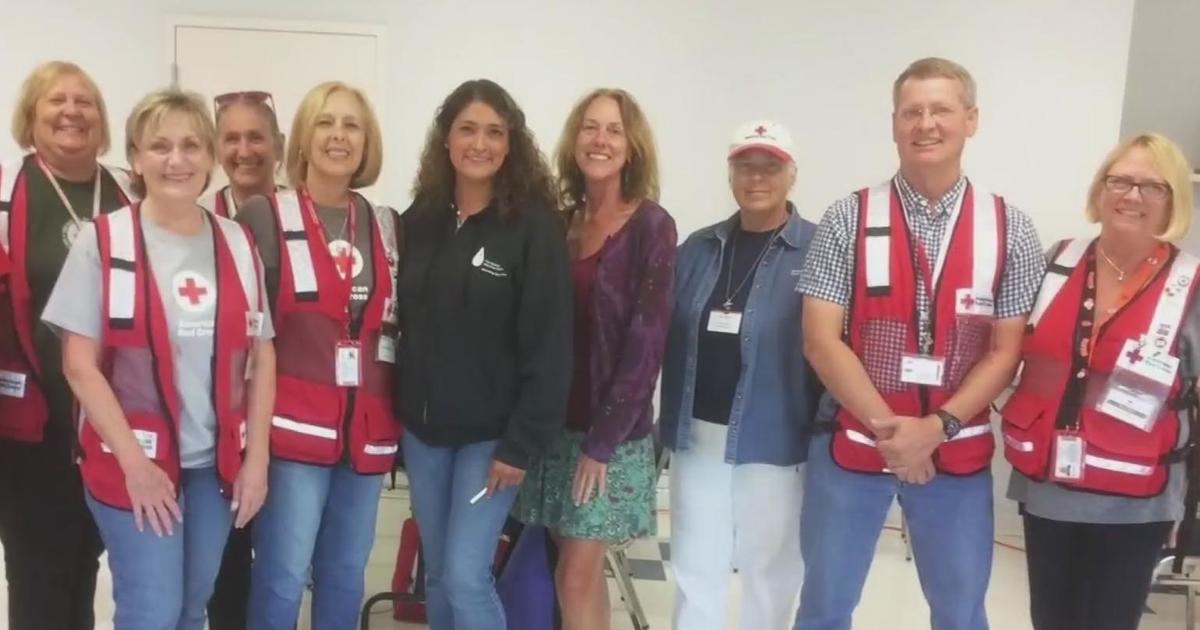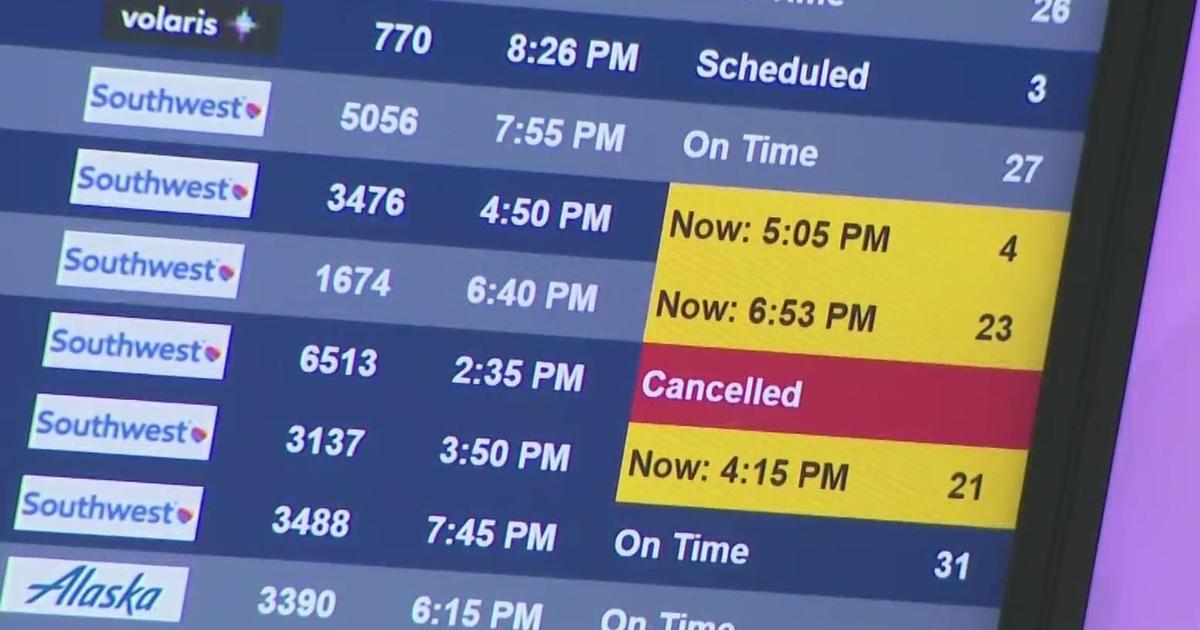Experts: To Help Typhoon Victims, Send Money, Not Stuff
TACLOBAN, Philippines (CBS/AP) - Faced with heartbreaking images of the typhoon-ravaged Philippines — the sea of corpses, communities reduced to rubble, mothers clutching their hungry children — the world is watching an epic tragedy unfold and looking for ways to help. The big question is how.
In the aftermath of mega-disasters such as Typhoon Haiyan, experts say there are some basic rules for those eager to do good: Forget the rummage sale clothes, the old toys and the kind of supplies that will only stack up undistributed or damage an already weakened economy. Do send a cash donation to a respected charity.
"It absolutely should be money," says Kathleen Tierney, director of the Natural Hazards Center at the University of Colorado-Boulder, a clearinghouse and research group on the social aspects and impacts of disasters around the world. "Whether it's the U.S. or abroad, one thing that typically happens after a major disaster is people want to donate stuff. This creates enormous logistical problems ... and people receiving donations they could never conceivably use, like winter coats sent to people in the Caribbean."
Athough canned goods might seem like the answer following disasters like the typhoon, sending food takes time and money. The cost of sending a $1 can of food far exceeds its worth. According to the Red Cross, between sorting, packaging, shipping and distributing, it could cost more than $15 to get a can overseas.
"$15 could be used to purchase ten times the food from Philippine stores," said Cynthia Shaw, Red Cross Communication Director.
When disaster aid isn't properly thought out, "you can end up undermining the local economy," Tierney said. "Once you ship building materials halfway around the world, it turns out you've ruined the market" for those in the area. "If you want to see economic recovery, you don't want to send so many supplies that you create a situation where people can't survive in a business sense."
The Red Cross, for instance, buys goods locally or domestically after disasters to help revive the economy, curb transportation costs and help guarantee culturally appropriate items are being used, says Jana Sweeny, the organization's director of international communications.
Sweeny says there's a natural tendency for people to want to help after headline-making catastrophes, but that altruism can sometimes be misguided.
She recalls in the days after Hurricane Katrina when storm survivors were evacuated to the Houston Astrodome, someone sent thousands of pounds of cheese — a shipment far too big for any refrigerator there to hold. Another well-meaning donor dispatched a truckload filled with patent leather shoes.
"People absolutely have good intentions," Sweeny says. "Many of us see people who've lost everything. They're standing there with nothing. The instinct is that anything will help make their lives better. But that's not always the case."
After Hurricane Mitch devastated parts of Central America in 1998, Sweeny was working for the Red Cross in Arizona when a woman came in one day with a live pig she wanted to donate. The would-be benefactor thought it would be a good way for a farm family to start a new breed. Sweeny explained the many reasons she could not ship a live animal.
It all turned out well: The woman auctioned off the pig and gave the proceeds to the Red Cross.
The Red Cross also cites the situation following the 2004 tsunami in Sri Lanka when tons of useless items went to waste. Donations included Santa costumes and high heels, which survivors found degrading.
Many experts say after massive disasters such as the one in the Philippines, it's best to contribute to humanitarian groups with a proven track record.
One reason is to avoid swindlers and scam artists who may try to appear credible by giving themselves names that sound like established charities or are connected to the disaster. "It happens every time — people see the story on the news and look to help," says Matthew Viola, senior program analyst at Charity Navigator. "Take your time and pick out a good one."
His nonprofit's website, www.charitynavigator.org, evaluates nearly 7,000 charities with a zero-to-four star rating scale — only three-and-four star organizations are recommended — in a variety of categories, including transparency, accountability and the amount of money spent on actual programs. It has a special link for donating to typhoon relief with tips, including how to ensure a contribution is designated for this disaster.
Experts also say donating to these organizations makes sense because they know the terrain having worked on previous disasters in the countries, often have local partners and are going to be around over the long haul. In large-scale disasters, Tierney says, "it really doesn't make a whole lot of sense for people to be parachuting in for a couple of months."
She says that's what happened after the 2010 Haiti earthquake when small groups traveled to the impoverished nation to construct new housing and sometimes made things worse by building in areas at high risk for future flooding or other weather calamities. "When people aren't aware of the local customs and local risks they can make tremendous mistakes," she says.
Rebuilding, she says, is far more complicated than just collecting money to pour into a disaster zone. Numerous questions have to be considered: Will the aid contribute to the rehabilitation? Will it be used in a culturally sensitive way? Will it intensify social inequality?
Some of those very problems cropped up when smaller charities decided to build homes in Sri Lanka after the 2004 tsunami, says Chris Palusky, of World Vision, a Christian humanitarian organization.
One group put up tin shacks, while another constructed nice homes, creating a deep sense of inequality, says Palusky, director of the group's humanitarian and emergency affairs. In another instance, homes were built that were not up to code and were on a property line, creating disputes among families. They eventually were torn down — illustrating the need, Palusky says, for strict standards and the importance of coordinating with local governments.
These "mom and pop" charities, he says, "go into the field with the best intentions, but sometimes the best intentions are the road to hell."
Though the typhoon is dominating news coverage now, some charities emphasize that the need for donations will remain great even when the world's attention moves on to another catastrophe. People made homeless by the Haiti earthquake and the Asian tsunami zone still are struggling years later, says Holly Solberg, director of emergency and humanitarian assistance at CARE USA.
In the Philippines, she says, "we're not just talking about rebuilding a home. We're talking about rebuilding livelihoods. People have lost members of their families. Schools have been destroyed. Hospitals have been decimated."
"I think one of the lessons from previous large-scale disasters," she adds, "is people are going to be feeling this and recovering for a long time. They're not going to be back on their feet in months. This is going to take years."
(TM and © Copyright 2013 CBS Radio Inc. and its relevant subsidiaries. CBS RADIO and EYE Logo TM and Copyright 2013 CBS Broadcasting Inc. Used under license. All Rights Reserved. This material may not be published, broadcast, rewritten, or redistributed. The Associated Press contributed to this report.)



